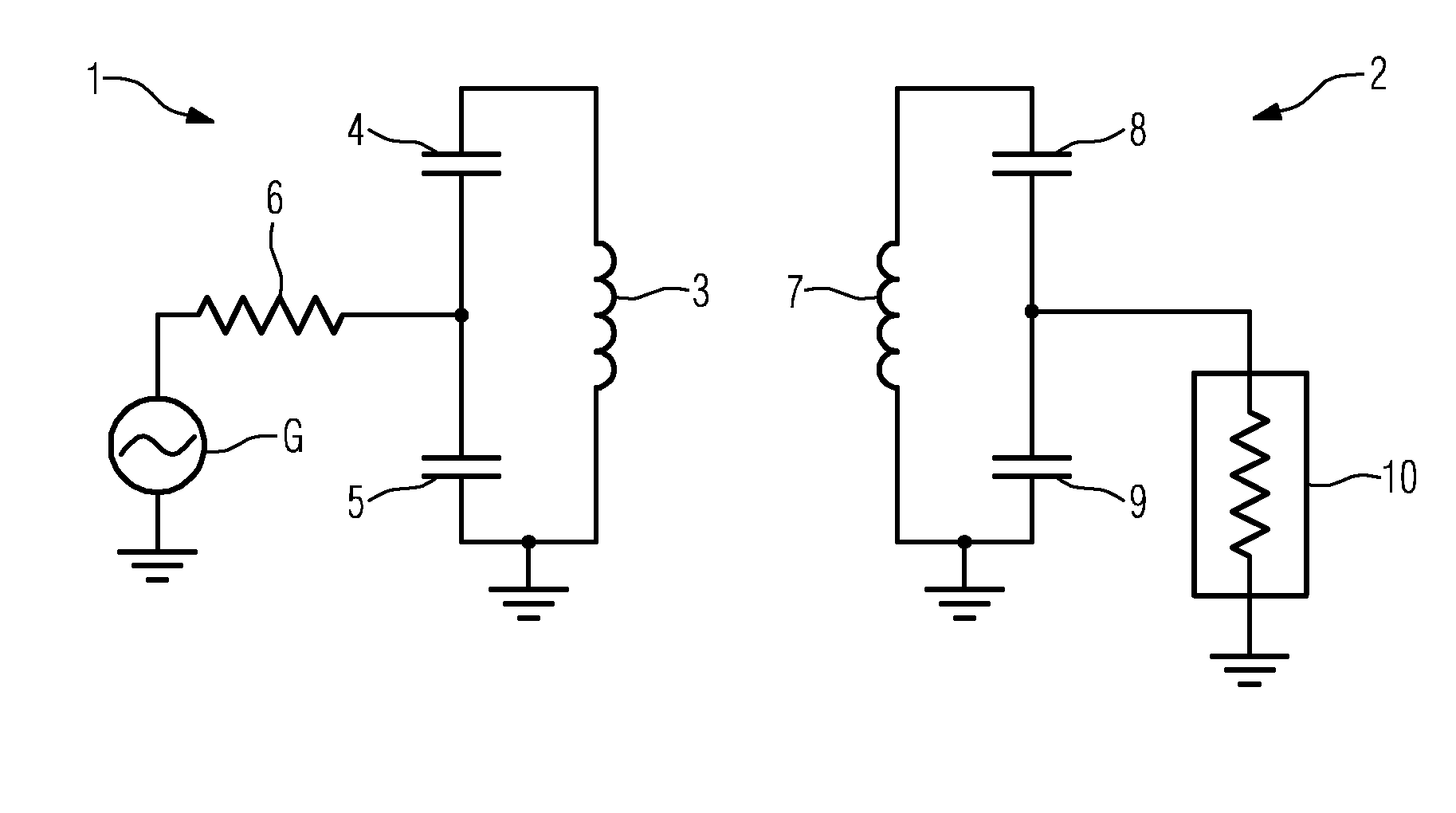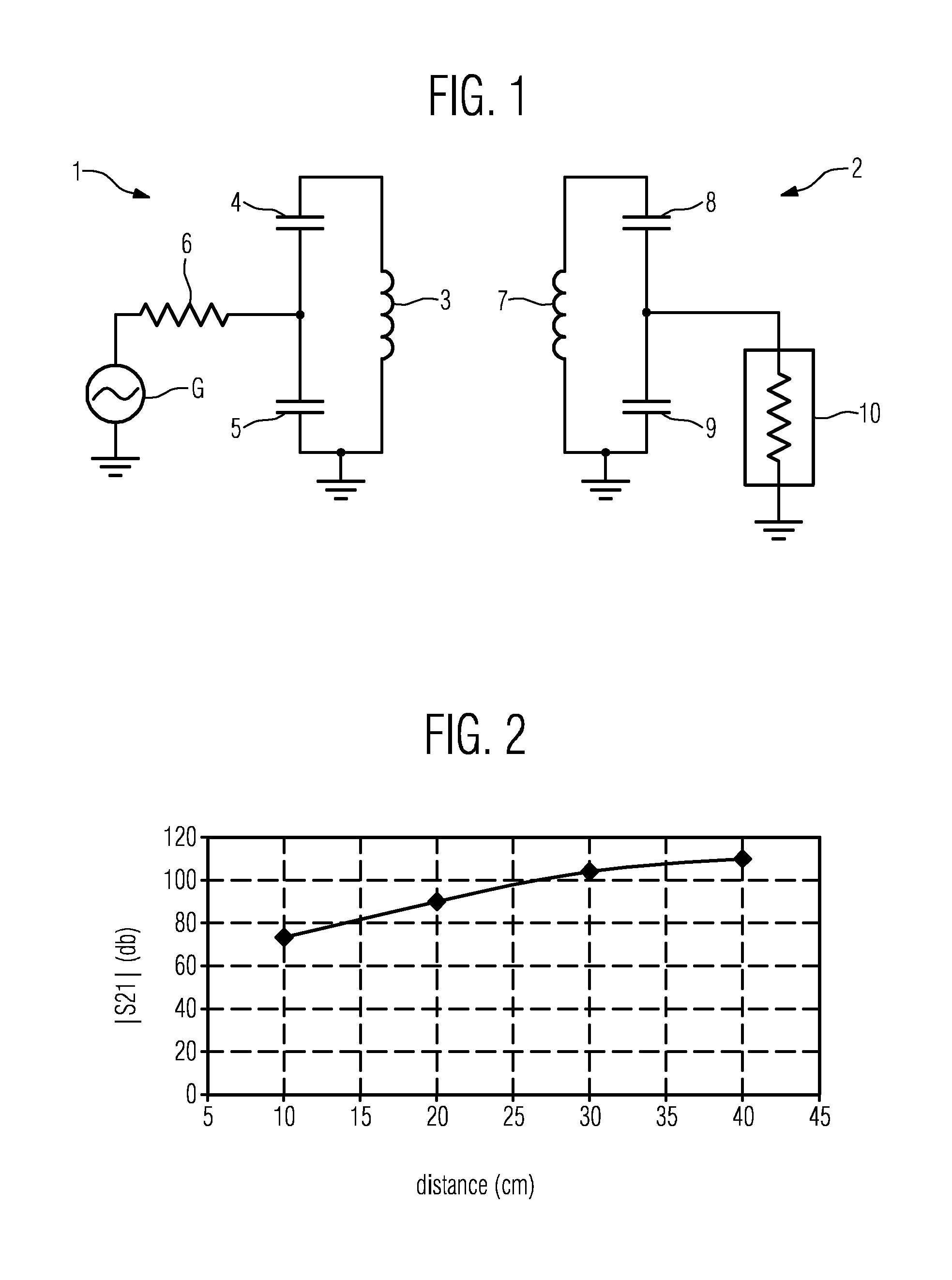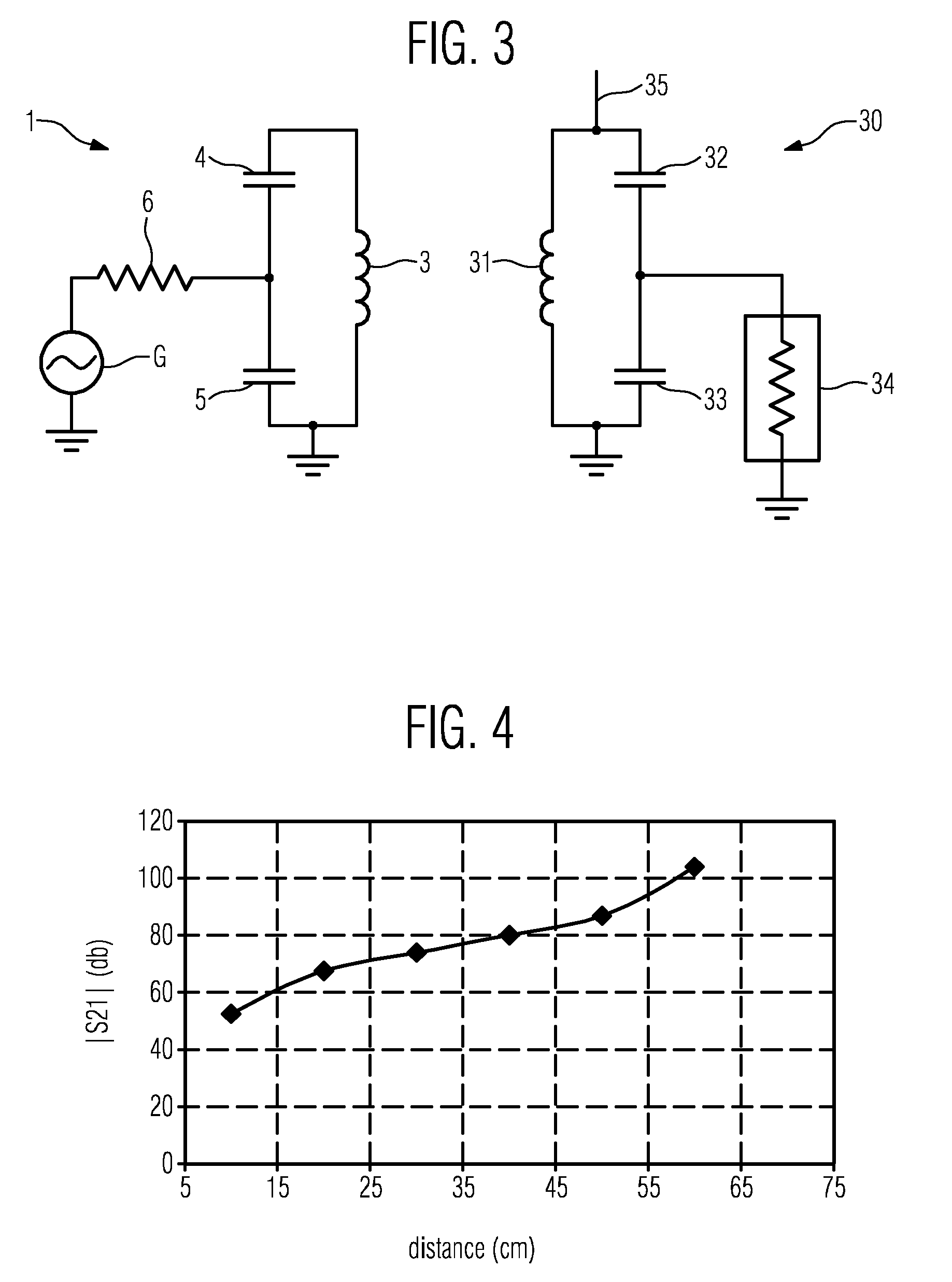Radio Receiver, Radio Transmitter, and Hearing Aid
a radio transmitter and receiver technology, applied in the field of radio receivers, can solve the problems of complete breakdown of the radio link, all radio systems, and the lowest power consumption possible, and achieve the effect of better reception
- Summary
- Abstract
- Description
- Claims
- Application Information
AI Technical Summary
Benefits of technology
Problems solved by technology
Method used
Image
Examples
Embodiment Construction
[0023]FIG. 1 shows the circuit diagram of a transmitter 1, which transmits a signal to a receiver 2. The transmitter 1 and the receiver 2 are set up to be magnetically coupled, i.e. the receiver 2 and the transmitter 1 are spaced apart within a relatively short distance.
[0024]The transmitter 1 comprises a signal generator G that generates a signal. This signal is applied to a tuned LC circuit consisting of a coil 3 and two capacitors 4, 5. The coil 3 serves as an antenna of the transmitter 1. The transmitter 1 further comprises an output resistor 6.
[0025]The signal generated by the generator G causes a current with a given frequency to flow through the coil 3. Accordingly, the current through the coil 3 generates a magnetic field of a certain wavelength corresponding to the frequency of the current flowing through the coil 3.
[0026]The receiver 2 comprises a coil 7 and two capacitors 8, 9. The coil 7 of the receiver 2 operates as an antenna of the receiver 2. The coil 7 may be an air...
PUM
 Login to View More
Login to View More Abstract
Description
Claims
Application Information
 Login to View More
Login to View More - R&D
- Intellectual Property
- Life Sciences
- Materials
- Tech Scout
- Unparalleled Data Quality
- Higher Quality Content
- 60% Fewer Hallucinations
Browse by: Latest US Patents, China's latest patents, Technical Efficacy Thesaurus, Application Domain, Technology Topic, Popular Technical Reports.
© 2025 PatSnap. All rights reserved.Legal|Privacy policy|Modern Slavery Act Transparency Statement|Sitemap|About US| Contact US: help@patsnap.com



